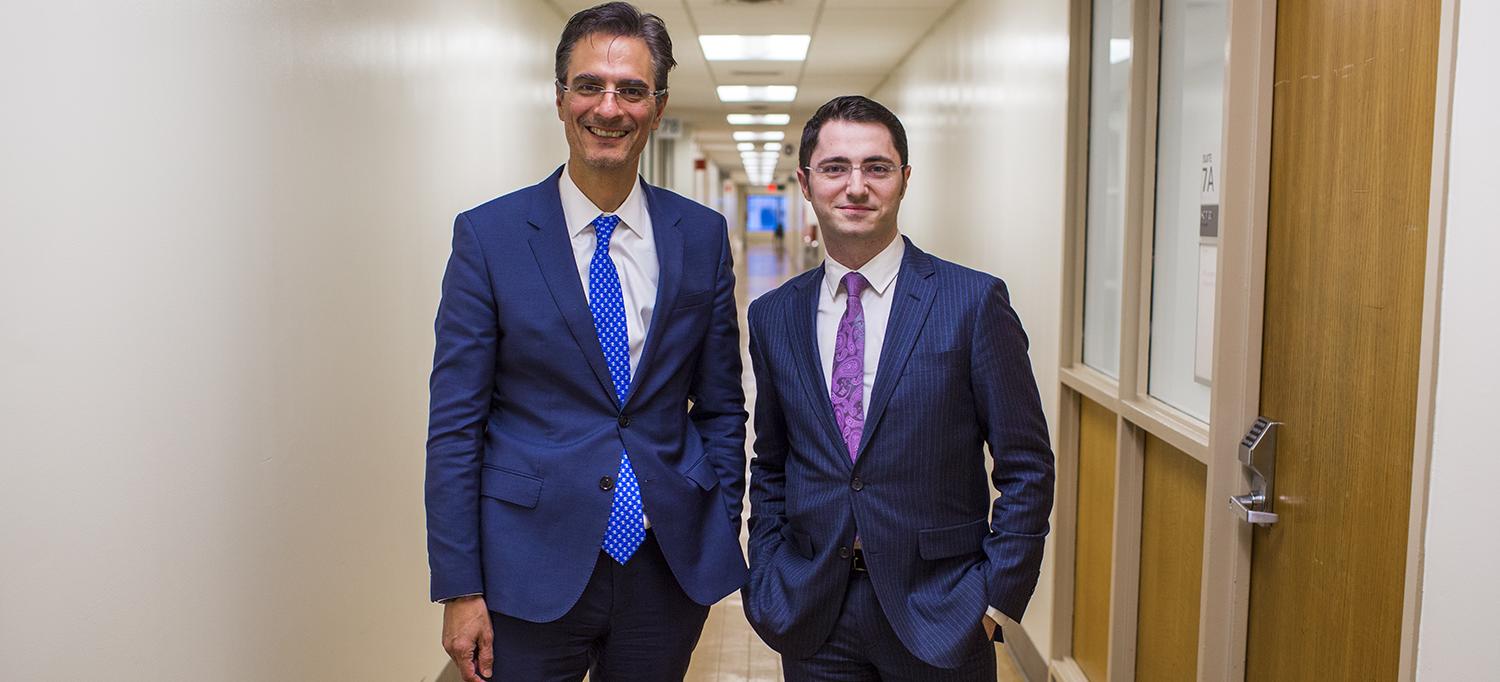
The new procedure, led by Dr. Luis F. Angel and Dr. Zachary N. Kon, improves care for people with COVID-19 and reduces risk of infection for providers.
Photo: NYU Langone Staff
Physicians at NYU Langone Health have developed a newer and perhaps safer approach to tracheostomy that addresses two important challenges: improve care for people with 2019 coronavirus disease (COVID-19) who require prolonged intubation and ventilator support, and reduce “super-spreading” events that pose a risk to healthcare workers.
Tracheostomy allows for easier removal of secretions from the airway, which has been a leading cause of death in people with COVID-19 who need prolonged intubation. In addition, it often results in less use of paralytic medications and affords patients the chance to be awake and alert, and to mobilize to maintain muscular strength. However, most prominent medical institutions and surgical organizations recommend against performing tracheostomies for two to three weeks, or until patients are less infectious, because the more conventional, open tracheostomy—often performed in the operating room—poses higher risk to healthcare workers because of increased exposure to secretions.
NYU Langone doctors chose to deviate from the recommended pathway, believing that COVID-19 patient care is maximized with early tracheostomy—just like they had seen with patients with other conditions who were on ventilators for long periods of time.
“We were determined to find a way to perform early tracheostomies that were not super-spreading events, and that would provide our patients the optimal care they needed as soon as possible,” says Robert J. Cerfolio, MD, MBA, executive vice president and vice dean, chief of hospital operations at NYU Langone Health, professor in the Department of Cardiothoracic Surgery, and director of clinical thoracic surgery. “We believe we have found a way to accomplish both.”
How the New Approach to Tracheostomy Works
The new procedure, led by Luis F. Angel, MD, professor in the Departments of Medicine and Cardiothoracic Surgery and medical director of lung transplantation at the NYU Langone Transplant Institute, and Zachary N. Kon, MD, associate professor in the Department of Cardiothoracic Surgery and surgical director of lung transplantation, is principally based on the position of the bronchoscope to the endotracheal tube, which patients use to breathe. Instead of going directly into the endotracheal tube, as is done in most conventional tracheostomies, the new procedure allows the bronchoscope to be placed in the patient’s airway, just above the endotracheal tube. “This prevents the patient’s secretions from blowing into the air and exposing healthcare workers to infectious discharges,” Dr. Angel says.
The procedure is performed in about five minutes at the patient’s bedside—reducing added risk of going to the operating room to have it performed. At the same time, the procedure provides a greater opportunity to more quickly wean patients off ventilators and paralytic agents used to sedate and immobilize them. This, in turn, gives patients an improved opportunity to rebuild lung and muscle capacity in order to mobilize and eventually return home.
Results of the New Approach to Tracheostomy to Date
NYU Langone has performed more than 40 of these novel percutaneous tracheostomies, with many more expected in the coming weeks. While it is too soon to prove impact on survival, all patients that have had this new procedure performed are alive, and most are making faster improvements than others, including being weaned off ventilators.
“No NYU Langone patient who received this procedure has been lost, and there have been no significant complications,“ says Dr. Kon. “Importantly, no NYU Langone healthcare providers present during this new technique have become ill.”
Dr. Cerfolio adds that improving patient care was originally the only reason to adopt this new technique. However, they have yielded secondary advantages, including removing patients sooner from ventilators, thus freeing them up for other patients, and reducing the use of paralytic agents, which are in low supply. He also points out that more than 20 academic medical centers across the country have reached out to learn how to perform the new procedure at their hospitals.
While more mature and robust data are needed, Dr. Cerfolio says this novel concept is reaping significant and promising dividends for patient outcomes. “The fact that we are seeing early benefits is a significant clinical milestone,” he adds. “We continue to look for new ways to battle this insidious illness.”
Media Inquiries
Media Relations Office
Phone: 212-404-3500
news@nyulangone.org
